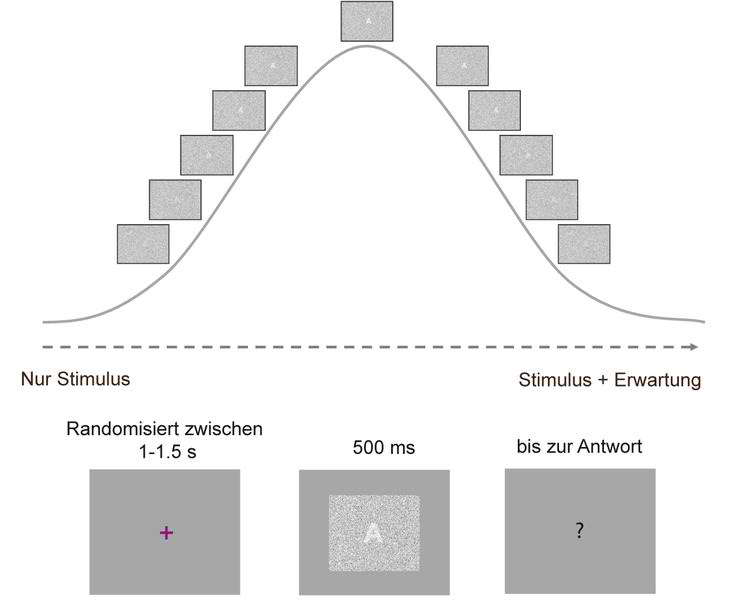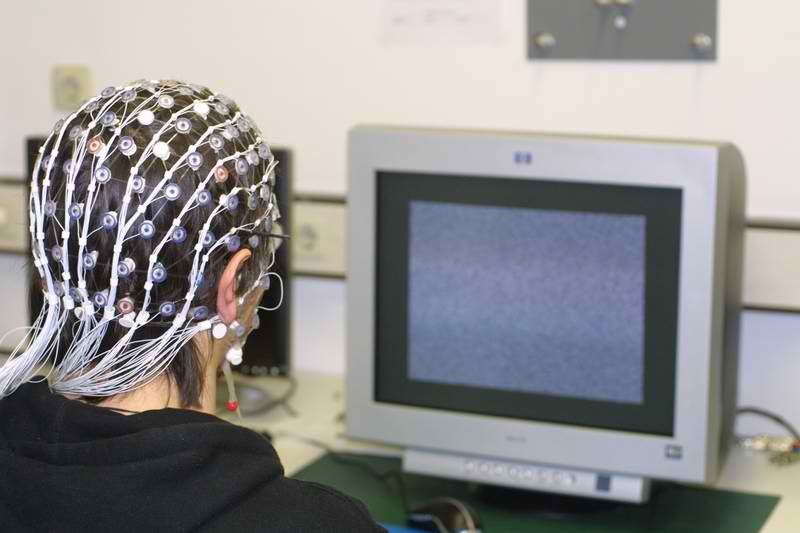Researchers say they know why this delay may vary in length; if you already know what you are about to see, you recognize it faster.
When the brain possesses some prior information, such as when it already knows what it is about to see, conscious recognition occurs faster. There has been some debate about whether or not the processes leading up to conscious perception were more rigid and if their timing varied.
On their way from the eye, visual stimuli are analysed in manifold ways by different processing stages in the brain. It is not until they have passed several processing steps that the stimuli reach conscious perception. This unconscious processing prior to perception usually takes approximately 300 milliseconds. The Max Planck scientists were now able to demonstrate that the timing of this process, far from being rigid, is in fact variable. In an experiment, participants perceived stimuli more efficiently and faster if they knew what to expect.
To investigate this, the scientists showed the participants images with a background of randomly distributed dots on a monitor. During an image sequence, the distribution of the dots systematically changed such that a symbol gradually appeared. Following each image, the participants indicated if they could see the symbol by pressing a button. As soon as the symbol had appeared fully and was clearly recognizable, the scientists presented the same image sequence in reverse order, such that the symbol gradually faded again. During the entire experiment, electroencephalographic (EEG) activity of the participants was measured.

This diagram shows the experimental set-up used by Max Planck researchers to examine how the human brain processes visual information. Initially, the subjects participating in the trial had to fix a cross on a screen. Then, they were presented with an image with randomly distributed pixels (random field of noise) for a duration of 500 ms. After that, a response screen displayed a question mark and subjects could indicate by pressing a button if they were able to recognize a symbol within the random field of noise. The same was repeated with screens, in which the hidden symbol became gradually more and more recognizable. As soon as the symbol had appeared fully and was clearly recognisable, the scientists presented the same screens in reverse order, showing each symbol fading gradually. © Max Planck Institute for Brain Research
Whereas the participants took relatively long to recognize the symbol in the first sequence of images with increasing visibility, the threshold of awareness in the second, reverse presentation of images was much lower. The participants were able to recognize the letters even at very poor resolution.
“Expectations based on previously acquired information apparently help to perceive the object consciously”, says Lucia Melloni, first author of the study. Once the participants knew which symbol was hiding in the random field of noise, they were able to perceive it better. The scientists have thus confirmed previous studies, according to which people perceive moving objects better if they already know in which direction the objects will move.
Moreover, the measurements of EEG activity produced astonishing results. “We found that the timing of EEG activity for conscious perception changed depending on the person’s expectations”, says Lucia Melloni. If the participants could predict what they were going to see, the characteristic EEG pattern for conscious perception took place 100 milliseconds earlier than without prior expectations.

Participant with EEG head net taking part in the study. © Max Planck Institute for Brain Research
The scientists might thus have found a conclusive explanation for the contradictory results of other neuroscientific research groups. Depending on the study, they had sometimes found very early and sometimes very late EEG activity correlating with conscious perception. “Our research explains this variability in timing. Apparently, the brain does not process the stimuli rigidly and at the same speed; rather, it is flexible”, explains Wolf Singer. Processing is thus faster if the brain only has to compare the incoming visual information with a previously established expectation. As a result, conscious perception occurs earlier. In contrast, if the brain has to assess a stimulus from scratch due to a lack of prior information, the processing takes longer.
These results may show that previous EEG studies have been interpreted incorrectly. “Since the interpretation depends heavily on the sequence of events, EEG activity may have been incorrectly allocated to consciousness processes,” surmises Wolf Singer, the Director of the Department for Neurophysiology at the Max Planck Institute for Brain Research in Frankfurt. “In light of these results, it appears necessary to re-investigate the neuronal correlates of consciousness.”




Comments